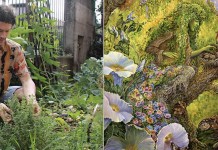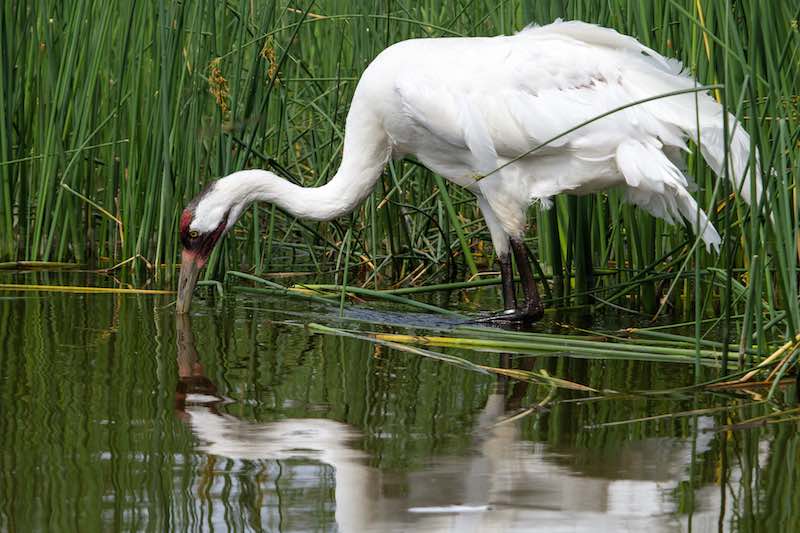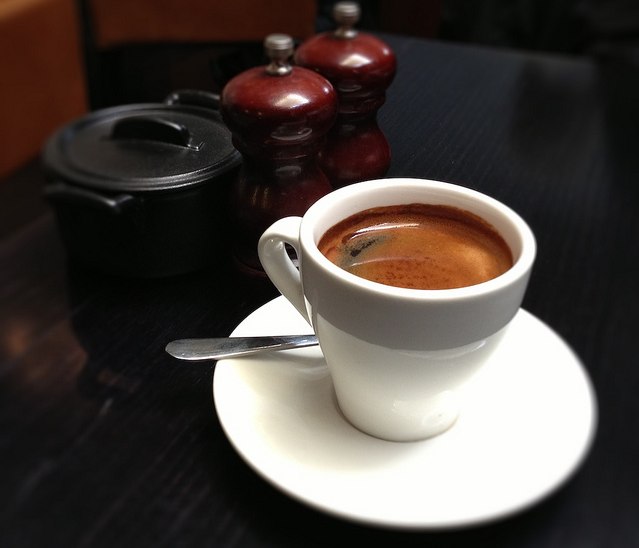Polio Vaccines in Somalia
Saving Wildlife Also Helps Reduce Poverty
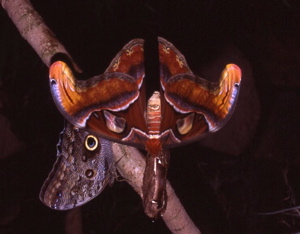 A World Wildlife Fund report this week says that efforts to save pandas and tigers and gorillas can also reduce poverty and improve the lives of local communities in rural areas, like Nepal, Uganda, India, Namibia, Costa Rica and China. Species work not only helps eradicate poverty and hunger, but also promotes sustainable and fair development, and in some cases generates significant amounts of money through eco-tourism projects, which allow tourists to observe species in the wild, like marine turtles, pandas and mountain gorillas.
A World Wildlife Fund report this week says that efforts to save pandas and tigers and gorillas can also reduce poverty and improve the lives of local communities in rural areas, like Nepal, Uganda, India, Namibia, Costa Rica and China. Species work not only helps eradicate poverty and hunger, but also promotes sustainable and fair development, and in some cases generates significant amounts of money through eco-tourism projects, which allow tourists to observe species in the wild, like marine turtles, pandas and mountain gorillas.
Wind Power up by 25% Over Last Year
 The wind energy industry worldwide installed more than US$14 billion worth of new generating equipment last year, an increase of 25 percent over 2004, according to a recent report by the Global Wind Energy Council. The Environment News Service reports the United States led the way, with an addition of 2,431 megawatts of capacity, enough to power 680,700 U.S. households per year. Germany was next with 1,808 MW, and Spain was third with 1,764 MW of new generating capacity.
The wind energy industry worldwide installed more than US$14 billion worth of new generating equipment last year, an increase of 25 percent over 2004, according to a recent report by the Global Wind Energy Council. The Environment News Service reports the United States led the way, with an addition of 2,431 megawatts of capacity, enough to power 680,700 U.S. households per year. Germany was next with 1,808 MW, and Spain was third with 1,764 MW of new generating capacity.
Coral Reef Discovered
A new coral reef was discovered off the Thai coast, which is home to over 30 types of hard corals and at least 112 species of fish, including a parrot fish never seen in Thailand until now — and as a rare species of sweet lips. It’s an area of 1.4 square miles, 270 hectares, and scientists call it “spectacular.”
A Sure Sign of Spring: Wild Whooping Cranes Return to Wisconsin
Among the signs of springtime these days in central Wisconsin is the arrival of wild whooping cranes on Necedah National Wildlife Refuge and along the rivers and wetlands these majestic birds call their summer homes.
Thanks to the efforts of the Whooping Crane Eastern Partnership (WCEP), there are now 64 endangered whooping cranes migrating across the skies of eastern North America for the first time in more than a century using their eastern ancestral route.
Biologists with WCEP, an international coalition of public and private groups, announced today that 15 reintroduced whooping cranes had arrived on or near Necedah, and two others were roosting along the Wisconsin River.
Whooping cranes were on the verge of extinction in 1941, down to a low of just 21 birds. Today, about 300 birds exist in the wild. Aside from the 64 Wisconsin birds, the only other migrating population of whooping cranes nests at the Wood Buffalo National Park in Northwest Canada and winters at an Arkansas refuge on the Texas Gulf Coast. A non-migrating flock of approximately 60 birds also lives year-round in the central Florida Kissimmee region.
The migrations began, as GNN reported in 2001, when pilots, like surrogate parents, first led whooping crane chicks, who had been conditioned to follow, away from Necedah in their ultralight aircraft (disguised to look similar to a crane). The same technique was featured in the movie, Fly Away Home. Each subsequent year, WCEP biologists and pilots have conditioned and guided other groups of juvenile cranes southward on the 1,250 mile journey (40-70 days) to central Florida.
The whooping crane chicks that take part in the reintroduction project are hatched at the Patuxent Wildlife Research Center in Laurel, Md., where they are introduced to ultralight aircraft and raised in isolation from humans. To ensure the impressionable cranes remain wild, project biologists and pilots adhere to a strict no-talking rule, and use recorded adult crane calls to communicate with the young birds. Researchers wear costumes designed to mask the human form whenever they are around the cranes.
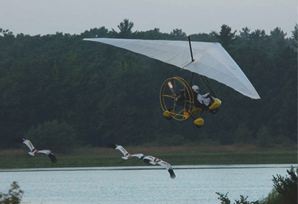 New classes of cranes are taken to Necedah each June to begin a summer of conditioning behind the ultralights to prepare them for their fall migration. Pilots lead the birds on gradually longer training flights at the refuge throughout the summer until the young cranes are deemed ready to follow the aircraft over Illinois, Indiana, Kentucky, Tennessee, Georgia, and into Florida.
New classes of cranes are taken to Necedah each June to begin a summer of conditioning behind the ultralights to prepare them for their fall migration. Pilots lead the birds on gradually longer training flights at the refuge throughout the summer until the young cranes are deemed ready to follow the aircraft over Illinois, Indiana, Kentucky, Tennessee, Georgia, and into Florida.
The 19 birds in the Class of 2005, the most recent ultralight- reintroduced cranes, arrived in Florida on Dec. 13, 2005, after a 64-day migration. The 19 remain at their pensite in Florida and have begun taking short evening flights in the immediate area of the pen.
In addition to the 19 chicks that migrated behind ultralights in 2005, biologists also released four additional chicks last fall into the company of older birds at Necedah, in the hopes that the chicks would learn the migration route from adult whoopers or sandhill cranes.
WCEP is using this “direct autumn release” technique to complement the known success of the ultralight-led migrations. The chicks are reared in the field and released with older birds after fledging, or developing their flight feathers. This method has proven successful with sandhill cranes.
As of March 24, two of the 2005 direct autumn release birds had embarked on migration and were in Indiana; the other two remain in Florida.
Project staff from the International Crane Foundation and the U.S. Fish and Wildlife Service track and monitor cranes in an effort to learn as much as possible about their unassisted migrations back up North, and the habitat choices they make along the way. Wisconsin DNR biologists, join them in monitoring the cranes while they are at their summer locations, in 35 of 72 Wisconsin counties.
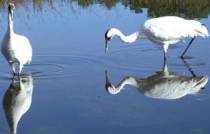 Whooping cranes, named for their loud and penetrating unison calls, live and breed in wetlands, where they feed on crabs, clams, frogs and aquatic plants. They are distinctive animals, standing 5 feet tall, with white bodies, black wing tips and red crowns on their heads.
Whooping cranes, named for their loud and penetrating unison calls, live and breed in wetlands, where they feed on crabs, clams, frogs and aquatic plants. They are distinctive animals, standing 5 feet tall, with white bodies, black wing tips and red crowns on their heads.
Many other states, provinces, private individuals and conservation groups
have joined forces with and support WCEP with funding and personnel and by donating resources, like opening up private lands for the cranes along the migration route. More than 60 percent of the project’s budget comes from private sources in the form of grants, donations and corporate sponsors.
For more information on the project, like what to do if you see a Whooping crane, and to see the amazing photo of the ultralight disguised as a crane, visit the WCEP website at www.bringbackthecranes.org.
Photos by Jason Mrachina, CC (top) Whooping Crane Eastern Partnership (middle)
India Makes Peace Overtures to Pakistan
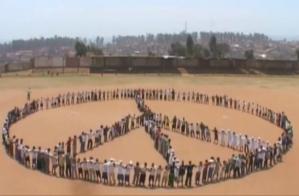 Voice of America reports India is again warming toward rival Pakistan and calling for progress on Kashmir.
Voice of America reports India is again warming toward rival Pakistan and calling for progress on Kashmir.
India’s Prime Minister has called for a treaty of peace and friendship with Pakistan. The overture aims at injecting fresh momentum into a flagging peace initiative between the two nuclear powers.
Clicks Against Breast Cancer, and Hunger, and Deforestation, and…
 My friend Katharine sent me a message that the Breast Cancer Site was having trouble getting enough people to click on their site for donating free mammograms every day to underserved women. She said, “It takes only a few seconds to go to their site and click on “donating a mammogram” (the pink button in the middle). It doesn’t cost you a thing. Their corporate sponsors and advertisers use the number of daily visits to donate mammograms in exchange for advertising. Here’s the web site!” www.thebreastcancersite.com
My friend Katharine sent me a message that the Breast Cancer Site was having trouble getting enough people to click on their site for donating free mammograms every day to underserved women. She said, “It takes only a few seconds to go to their site and click on “donating a mammogram” (the pink button in the middle). It doesn’t cost you a thing. Their corporate sponsors and advertisers use the number of daily visits to donate mammograms in exchange for advertising. Here’s the web site!” www.thebreastcancersite.com
This sounded just like the Hunger Site. (Have you ever clicked there to donate a free bowl of food for a hungy person?) In 1999, it had become one of most popular destinations on the internet. The Good News Network featured it in 1999, the first online activist web site. Well, whaddya know? I went to donate a mammogram with a simple click of my mouse and found — on the same page — not only the Hunger Site, but the Rainforest Site, The Child Health Site, the Literacy Site, and the Animal Rescue Site!
Carnegie Hero Fund Cites 21 for Extraordinary Heroism
 The Carnegie Hero Awards were announced today. The bronze medallion and $4,000 were awarded to 20 individuals who risked their lives to an extraordinary degree while saving the lives of others. The heroes announced today bring to 8,981 the number of awards made since the fund’s inception in 1904. An additional prize was awarded posthumously to Leslie Joseph Staniowski, who died in the performance of his act. Staniowski, 51, was felled by a gunman when he attempted to restrain the man, who was shooting at a bartender in a Las Vegas casino.
The Carnegie Hero Awards were announced today. The bronze medallion and $4,000 were awarded to 20 individuals who risked their lives to an extraordinary degree while saving the lives of others. The heroes announced today bring to 8,981 the number of awards made since the fund’s inception in 1904. An additional prize was awarded posthumously to Leslie Joseph Staniowski, who died in the performance of his act. Staniowski, 51, was felled by a gunman when he attempted to restrain the man, who was shooting at a bartender in a Las Vegas casino.
To nominate someone for the Carnegie Medal, write the Carnegie Hero Fund Commission, 425 Sixth Avenue, Suite 1640, Pittsburgh, PA 15219, or call toll free 1-800-447-8900. Read about all 21 acts of heroism, including a man who found a baby on the couch while crawling through a smoke-filled home looking for casualties in the midst of a blaze. www.carnegiehero.org
Killing is over, say Basque terrorists
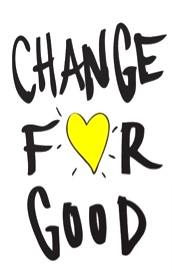 The Basque separatist group in Spain, announced a permanent ceasefire after four decades of armed military resistance. The Scotsman reports:
The Basque separatist group in Spain, announced a permanent ceasefire after four decades of armed military resistance. The Scotsman reports:
The news prompted jubilation across the country, where ordinary citizens say they can hardly believe the end has come for a group blamed for more than 850 deaths…
Green Australians Reusing 90% of Food Waste
 A report by the Australian Food and Grocery Council revealed that about 90% of waste and by-products from the food and grocery manufacturers surveyed was being reused or recycled, with less than 10% going to landfill.
A report by the Australian Food and Grocery Council revealed that about 90% of waste and by-products from the food and grocery manufacturers surveyed was being reused or recycled, with less than 10% going to landfill.
Industry participants in the survey have also reduced energy use by 14%, water use by 21% and greenhouse emissions by 29% since 2003.
Lawyer Floats Own Middle East Peace Plan
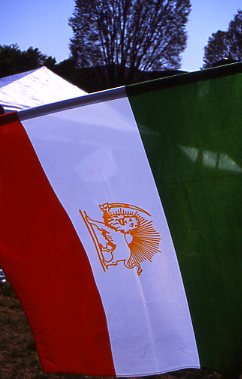 Josef Avesar, a successful Encino lawyer, has created a plan to resolve the Israeli-Palestinian conflict. “The concept was intriguing enough to keep 300 Israelis, Arabs and Americans engaged during a recent three-hour symposium at UCLA,” reports the Jewish Journal. Mr. Avesar believes:
Josef Avesar, a successful Encino lawyer, has created a plan to resolve the Israeli-Palestinian conflict. “The concept was intriguing enough to keep 300 Israelis, Arabs and Americans engaged during a recent three-hour symposium at UCLA,” reports the Jewish Journal. Mr. Avesar believes:
“It would create a momentum unparalleled in the history of the Middle East. Israelis and Palestinians would realize that there are more positive ways of dealing with each other. Age-old prejudices would soften, and accusations hurled by both sides would diminish. The public would be so galvanized by the success of the election and its attendant optimism that both sides would pressure their governments to cooperate with the federal system.”
It involves the creation of a Confederation that would serve as a mechanism for establishing projects of mutual benefit, such as utility grids, transportation systems and hospitals, composed of 300 independently elected delegates from every region.
Video Game Therapy Retunes Brain
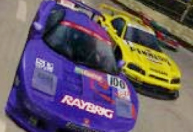 Doctors in 2002 pronounced Ethan Myers brain dead for life. Today he is at peer level in reading, walking and talking, and for much of the progress his parents credit a new frontier of video game therapy. (CNET News)
Doctors in 2002 pronounced Ethan Myers brain dead for life. Today he is at peer level in reading, walking and talking, and for much of the progress his parents credit a new frontier of video game therapy. (CNET News)
Video games are serving other noble uses like allowing young leukemia patients to do battle with the invasion of cancer cells, helping ADHD kids learn to focus, and helping to combat obesity in West Virginia schools, where they use the lively Dance Dance Revolution, a step-to-the-beat game, as part of the curriculum.
Punks Against Suicide
 A score of punk rock and hardcore bands are touring the country to raise awareness and much-needed cash for the teen suicide hotline, 1-800-Suicide and its parent organization, the Kristin Brooks Hope Center. The list of achievements born of this collaboration, after five years — and five tours — is impressive.
A score of punk rock and hardcore bands are touring the country to raise awareness and much-needed cash for the teen suicide hotline, 1-800-Suicide and its parent organization, the Kristin Brooks Hope Center. The list of achievements born of this collaboration, after five years — and five tours — is impressive.
Since 2001, the Take Action Tour and the National Hopeline Network have teamed up and thanks to the petition drives and fundraising, suicide and the mental health challenges that lead to suicide have gained national attention in the halls of government. Impassioned politicians, like Congressman Patrick Kennedy, joined together with riveted punk rockers and concerned citizens for a press conference on Capitol Hill this month to demand the government fully fund and support suicide prevention efforts in the US.
Court Rejects Easing Pollution Controls
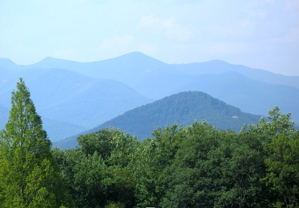 A federal appeals court rejects Bush Administration efforts to weaken Clean Air emission rules on aging coal-fired power plants. The vote was unanimous that the changes violated the Clean Air Act. Only Congress can authorize revisions in the law.
A federal appeals court rejects Bush Administration efforts to weaken Clean Air emission rules on aging coal-fired power plants. The vote was unanimous that the changes violated the Clean Air Act. Only Congress can authorize revisions in the law.
New York Attorney General Eliot Spitzer led the court fight and called Friday’s ruling “a major victory for clean air and public health” and a “rejection of a flawed policy.”
Green College Courses and Degrees
Two opportunities for education, one green and the other coral (Gaia U. uses the color coral to distinguish the upcoming era of harmonious holistic living) Both are featured in the wonderful Positive News quarterly journal started the UK in 1993:
We’ve Read the Cover: Now NASA Opens The Book On Mars
 The public has seen four rovers scratching the surface of Mars, and two orbiters peering at the red planet. Now with dazzling precision, NASA has put an expedition in orbit with more power to probe the secrets of Mars than all the previous orbiters and landers combined. The Mars Reconnaissance Orbiter has arrived at the red planet.
The public has seen four rovers scratching the surface of Mars, and two orbiters peering at the red planet. Now with dazzling precision, NASA has put an expedition in orbit with more power to probe the secrets of Mars than all the previous orbiters and landers combined. The Mars Reconnaissance Orbiter has arrived at the red planet.
The Reconnaissance Orbiter is a unique package of six instruments to help identify landing locations for future Mars Explorers. The six mission objectives for the Mars Reconnaissance Orbiter (MRO) in plain English:
2. Determine the nature of complex layered terrain and identify water-related landforms.
3. Search for sites and pinpoint where any water is (to inform future studies asking if there was ever life on Mars, because, water is essential for life.)
5. Return scientific data from Mars.
NASA intends to fulfill all these goals while in orbit!
A Better Way to Recycle Plastic
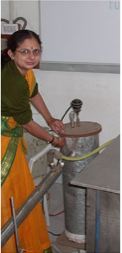 Perhaps we can take a lesson from the innovative entrepreneurs of India when it comes to recycling plastics.
Perhaps we can take a lesson from the innovative entrepreneurs of India when it comes to recycling plastics.
“Alka loves plastics for an exciting reason; she is the inventor of a process that clears our environment of plastic waste, creates a million jobs in waste management, adds useful, profitable by-products, like fuel, to our economy and makes India a technology leader in taming plastics.”
Introducing Good News India and its editor D v Sridharan, who is the site’s 63-year-old writer, researcher, publisher, photographer, webmaster and financier. I am proud to call him my friend and he calls me his earliest champion. D v has been the champion of entrepreneurs, heros, and angels throughout the sub-continent since 2000. Subscribe to his mailing list, peruse his vast archives, or watch for his compelling stories to become a regular feature here on the Good News Network!
(story submitted by Cathy, Chicago,IL catvaloo)
Teacher Stops School Shooting with Hug
Jenice Fagan is a beautiful example of Compassion in Action.
She felt compassion on Tuesday toward the troubled boy who took a gun to school and began shooting his classmates. The Nevada teacher persuaded the boy to put down the gun. Then, she held him in a "bear hug" until other teachers arrived to help. ABC’s Good Morning America featured the story:
"He tossed the gun down, and then I hugged him, and I told him I wouldn’t leave him." Fagan said she was not scared at any point. "I was sad for him, because I know him. I care about my students immensely. I felt real emotion for him."
Fat Man Walking: Losing Pounds and Gaining Peace
Steve Vaught is an unlikely celebrity:
 “…A morbidly obese man who has captured the heart of America by walking alone across the country on a quest to lose weight and find his soul. Like a real-life Forrest Gump, Vaught’s journey is touching the lives of millions. Last month his website had more than 700,000 hits. Fans travel thousands of miles to walk with him for a little way… Later this month he will receive the ultimate accolade of American fame: an appearance on Oprah”
“…A morbidly obese man who has captured the heart of America by walking alone across the country on a quest to lose weight and find his soul. Like a real-life Forrest Gump, Vaught’s journey is touching the lives of millions. Last month his website had more than 700,000 hits. Fans travel thousands of miles to walk with him for a little way… Later this month he will receive the ultimate accolade of American fame: an appearance on Oprah”Read the story by Paul Harris in the Guardian. Harris attributes some of our feelings of connection to Vaught’s Buddhist-style attitude. . .
Steve, who is a 39-year-old father of two, doesn’t look morbidly obese to me (judging by the photo on his home page) but he’s already walked more than 2200 miles and lost more than 100 pounds! He began the journey weighing 410 pounds but says he will not become obsessed by the numbers on any scale:
Only 550 miles to go until New York City. Great going, Steve!
20 Muslim Inventions that Shaped Our World
1001 Inventions: Discover the Muslim Heritage in Our World is an exhibition which began a tour of the UK this week at the Science Museum in Manchester. Paul Vallely, Associate Editor at the Independent, lists 20 of the most-influential inventions from the Muslim world.
“From coffee to checks and the three-course meal, the Muslim world has given us many innovations that we take for granted in daily life.”
Here are the top Muslim achievements that have shaped our world, according to the curators:
1. Legend tells of an Arab goat herder who noticed their change in mood when his goats ate a certain berry. He boiled the berries and came up with the first coffee.
2. The ancient Greeks thought light emitted from the eye (like a laser) causing us to see. It was a Muslim mathematician in the 10th Century that instead realized light entered into the eye. Astronomer and physicist Ibn al-Haitham invented the first pin-hole camera after observing light entering a hole in the shutters. The smaller the hole was, the clearer the image.
3. The game of chess we know today evolved from the players of Persia earlier than the 10th century. The rook comes from the Persian word rukh, meaning chariot.
4. The “first in flight” may not have been Wright. A thousand years before Kitty Hawk, Muslim poet, astronomer, musician and engineer Abbas ibn Firnas, made several attempts to construct a machine that would fly. First in 852, he used cloth stretched by wooden struts inventing what is thought to be the first parachute. At the age of 70, a machine of silk and eagle feathers held him aloft for 10 minutes after he leaped from a cliff. Baghdad airport is named after him.
5. It was Islamic ritual to bath and wash during times in Europe when bathing was considered bad for your health. Arabs originated the general recipe for soap we still use today: vegetable oils with sodium hydroxide and aromatic oils such as orange or thyme. England saw its first shampoo thanks to a Muslim.
6. Around the year 800, alchemy was converted into chemistry by Islam’s foremost scientist, Jabir ibn Hayyan. He invented many of the basic procedures and equipment still in use today – distillation, evaporation, crystallization, purification, filtration and oxidization. He discovered sulphuric and nitric acid. He invented the alembic still, for the creation of perfumes and alcoholic spirits. Ibn Hayyan was the founder of modern chemistry and a forerunner of the scientific method.
CHECK Out: From Slum Life in Uganda to Teen Chess Champion
7. The crank-shaft, one of the most critical mechanical inventions of all time, central to the automobile engine, was created by an ingenious Muslim engineer called al-Jazari. His device could elevate water for irrigation around the year 1200. His Book of Knowledge of Ingenious Mechanical Devices documents his inventive uses for valves and pistons, mechanical clocks and the first-ever combination lock. He is called the father of robotics.
8. The process of quilting was introduced to Europe after Crusaders saw Muslim warriors wearing dual-layer shirts with layers of straw in between. The quilted shirts were an effective form of protection in battle as well as a form of insulation. It helped the Crusaders avoid the chafing resulting from their metal armour. Quilting became a cottage industry in the colder climates such as Britain and Holland.
 9. The pointed arch of European Gothic cathedral fame was borrowed from Islamic architecture. It was superior to the rounded arch used by the Romans and Normans, and allowed for much grander buildings. Other inventions by Muslims included ribbed vaulting, dome-building techniques and rose windows. Muslim genius was also behind the building of Europe’s castles with their “arrow slits, battlements, a barbican and parapets”. The square towers and keeps of Europe proved to be inferior to the more easily defended round ones. “Henry V’s castle architect was a Muslim.”
9. The pointed arch of European Gothic cathedral fame was borrowed from Islamic architecture. It was superior to the rounded arch used by the Romans and Normans, and allowed for much grander buildings. Other inventions by Muslims included ribbed vaulting, dome-building techniques and rose windows. Muslim genius was also behind the building of Europe’s castles with their “arrow slits, battlements, a barbican and parapets”. The square towers and keeps of Europe proved to be inferior to the more easily defended round ones. “Henry V’s castle architect was a Muslim.”
10. The 10th century Muslim surgeon called al-Zahrawi designed many of our modern surgical instruments still in use today: scalpels, bone saws, forceps, and fine scissors for eye surgery. He established by accident that catgut used for internal stitches dissolves away naturally (his monkey ate his lute strings!) and determined it can also be used to encase capsules of medicine. In the 13th century, 300 years before William Harvey’s assertions, another Muslim doctor named Ibn Nafis charted the circulation of the blood. We have Muslim doctors also to thank for inventing anaesthetics of opium and alcohol mixes and hollow needles to extract from the eye cataracts, which is a technique still in use today.
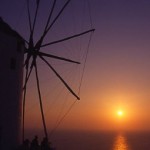 11. Each year, when the Arabian desert dried up, the only way for the people to survive was to perform the backbreaking tasks of drawing water and grinding grain by hand. In 634, a clever Muslim inventor built the first windmill, which tapped on the only source of energy the desert could offer – a wind which blew steadily for months at a time. The first windmills had six or twelve sails covered in fabric or palm leaves. They provided power to draw water for irrigation, and turn mill stones for grinding corn. Europe wouldn’t see its first windmill for another 500 years.
11. Each year, when the Arabian desert dried up, the only way for the people to survive was to perform the backbreaking tasks of drawing water and grinding grain by hand. In 634, a clever Muslim inventor built the first windmill, which tapped on the only source of energy the desert could offer – a wind which blew steadily for months at a time. The first windmills had six or twelve sails covered in fabric or palm leaves. They provided power to draw water for irrigation, and turn mill stones for grinding corn. Europe wouldn’t see its first windmill for another 500 years.
12. The technique of inoculation, the introduction of a pathogen into a living organism to stimulate the production of antibodies, “was not invented by Pasteur” but originated in the Muslim world and was introduced to the European world by an English ambassador’s wife by way of Istanbul in 1724. “Children in Turkey were vaccinated with cowpox to fight the deadly smallpox at least 50 years before the West discovered it“.
13. In 953, the Sultan of Egypt asked for a pen that would not leak all over his clothes and hands. The fountain pen was invented in which the ink would be held in a reservoir and be delivered to the paper (or papyrus) by gravity.
14. The style of our numerals (in the west) is Arabic and first appeared in print in the work of Muslim mathematicians around 825. From the Muslim world came algorithms and much of the theory of trigonometry, the word algebra and some of its principles. Modern cryptology owes its basis and discovery of frequency analysis to Al-Kindi. The achievements of Muslim math scholars were imported into Europe 300 years later by the Italian mathematician Fibonacci.
15. The concept of the three-course meal – “soup, followed by fish or meat, then fruit and nuts” was brought to Cordoba in the 9th century from Iraq, Ali ibn Nafi (also known as Ziryab – Blackbird). He also introduced crystal glasses, invented by a Muslim after experiments with rock crystal.
16. Thanks to the advanced medieval weaving techniques in the Muslim world, new dyes from Islamic chemistry and a developed sense of pattern born of the necessity to design without using images of Mohammad in Islamic art. Europe’s floors were unclean and unadorned until Arabian and Persian carpets were introduced.
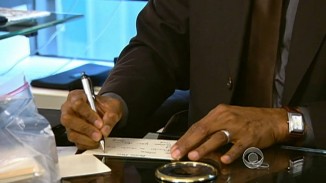 17. The idea for our modern checking accounts came from the Arab world. To avoid having to transport money across dangerous terrain, a written vow was honored to pay for goods upon delivery. “In the 9th century, a Muslim businessman could cash a check in China drawn on his bank in Baghdad.”
17. The idea for our modern checking accounts came from the Arab world. To avoid having to transport money across dangerous terrain, a written vow was honored to pay for goods upon delivery. “In the 9th century, a Muslim businessman could cash a check in China drawn on his bank in Baghdad.”
18. Ahead in Astronomy: 500 years before Galileo, Muslim scholars accepted that the Earth was a sphere. The astronomer Ibn Hazm in the 9th century said “The Sun is always vertical to a particular spot on Earth”, and therein found his proof. He and his colleagues were so accurate in predicting the Earth’s circumference that their calculations turned out to be less than 200km off. Al-Idrisi brought a globe to the court of King Roger of Sicily in 1139 spreading the ideas westward.
19. The Chinese invented gunpowder and fireworks, but Arabs first formulated the chemical process that led to its fitness for military battle. Muslim bombs terrified the Crusaders in the 15th century — both their rockets, and their torpedoes that could blow up ships.
20. Enjoying gardens: Medieval Europe only had gardens for food and herbs until the the Arabs spread the notion that gardens could be places for “beauty and meditation” — the first influence coming to Muslim Spain in the 11th century. Flowers that originated in Muslim gardens include the carnation and the tulip.
(Coffee photo by Katherine Lim, ultraklm on Flickr, CC license)
SHARE The Interesting History on Social Media…









